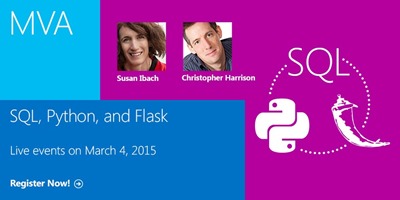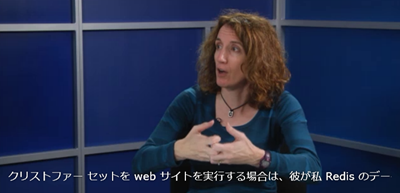Let us take you from complete beginner to professional web developer
 It can be difficult to connect the dots from beginner programmer to understanding the architecture of a full fledged application. We've put together a learning path to try and help!
It can be difficult to connect the dots from beginner programmer to understanding the architecture of a full fledged application. We've put together a learning path to try and help!
This post shares a learning path that can help you go from beginner coder to creating the architecture of a professional web application. If you already know your way around basic Python you can jump in where you need the most help!
- Introduction to Programming with Python
- Introduction to Creating Websites using Python and Flask
- SQL, Python, and Flask
Introduction to Programming with Python
It all started with an Introduction to Programing with Python course. I frequently find introduction to coding courses or introduction to <insert programming language here> courses start out simple and then you get to module 3 or 4 and you find yourself lost and give up. That’s why Christopher Harrison ( @GeekTrainer ) and myself ( @HockeyGeekGirl ) put together a course on Microsoft Virtual Academy that was designed for the complete beginner!
We tried to make it practical yet entertaining. After all coding isn’t just about syntax. Coding is a tool we can use to solve problems and do amazing things! We wanted coders to understand that from the start.
We chose Python because it is a forgiving programming language for beginners, yet you can create sophisticated programs using Python. It is also supported on a wide variety of platforms. We use Visual Studio with the Python Tools for Visual Studio (PTVS) in our demonstrations, but, you could write the same code using other Python development environments. Of course, since you can get Visual Studio Community for free and the Python Tools for Visual Studio for free, I would definitely recommend Visual Studio for Python development. Visual Studio has had it’s tires kicked for many years by developers and the PTVS team has done a really good job adding Python support.
Introduction to Creating Websites using Python and Flask
We had great feedback from the first course (we’ve even been translated into everything from Spanish to Japanese!). We also had a lot of questions on additional topics such as how do you publish your code, and how do you store data. So due to popular demand, we created part two: “Introduction to Creating Websites using Python and Flask” . This course shows how to bring your Python code to the web using Flask and also how to store values in a key/value database using Redis. Then we show how to move that entire solution to Azure so you can share it with the world!
SQL, Python, and Flask
But, we still felt there was more information a developer needed to be able to feel confident in their abilities and to build a professional application. So, next week, we present the final course in our series. We will introduce basic Object Oriented programming, bootstrap, and relational databases (whether they be on premise or in the cloud). The course is title SQL. Python and Flask and will be live March 4th, 2015 and available on demand about two weeks later at the following link.
 Will you be an expert programmer after completing these courses? There is no way we can do that in 3 short courses, but you do learn how to write code, structure code, and publish code in a way that’s maintainable and scalable. You get enough exposure to figure out the different aspects of coding so you can decide what aspect of coding you want to pursue. Are you passionate about the look and feel of your application? Awesome then maybe you should explore more courses on HTML/CSS and other tools for front end design. Want to learn more about storing data efficiently? Great, you can find lots of great courses to get you rolling with relational or NoSQL databases. Do you like solving the puzzles of writing the code on the back end? Great dig further into Python syntax or maybe try another programming language! The key here is you should have enough knowledge after these courses to understand how those pieces fit together. Then you can decide which skills you most want to develop. How do you go from that point to becoming a professional web developer. The same way you get to Carnegie Hall: Practice, Practice, Practice!
Will you be an expert programmer after completing these courses? There is no way we can do that in 3 short courses, but you do learn how to write code, structure code, and publish code in a way that’s maintainable and scalable. You get enough exposure to figure out the different aspects of coding so you can decide what aspect of coding you want to pursue. Are you passionate about the look and feel of your application? Awesome then maybe you should explore more courses on HTML/CSS and other tools for front end design. Want to learn more about storing data efficiently? Great, you can find lots of great courses to get you rolling with relational or NoSQL databases. Do you like solving the puzzles of writing the code on the back end? Great dig further into Python syntax or maybe try another programming language! The key here is you should have enough knowledge after these courses to understand how those pieces fit together. Then you can decide which skills you most want to develop. How do you go from that point to becoming a professional web developer. The same way you get to Carnegie Hall: Practice, Practice, Practice!
So if you know someone who wants to learn how to code, please suggest our series! Our goal was to take the fear out of coding and really help those who have always wanted to get into coding, but really didn’t know how to start and get them up and running! Along the way hopefully we’ve helped not only the beginners but also some existing Python coders take their coding in a new direction with topics like Redis, Flask, Bootstrap, and SQL. Join us!

